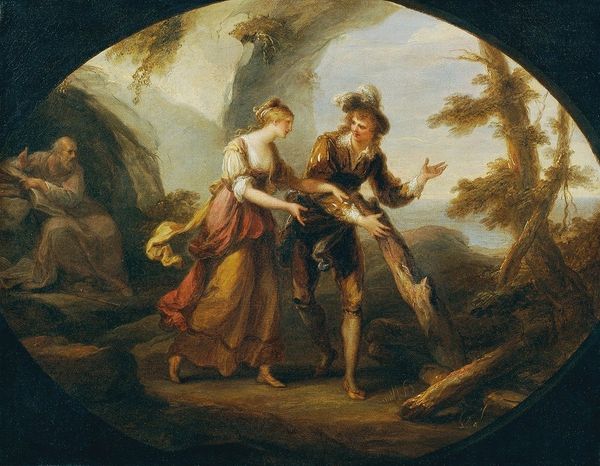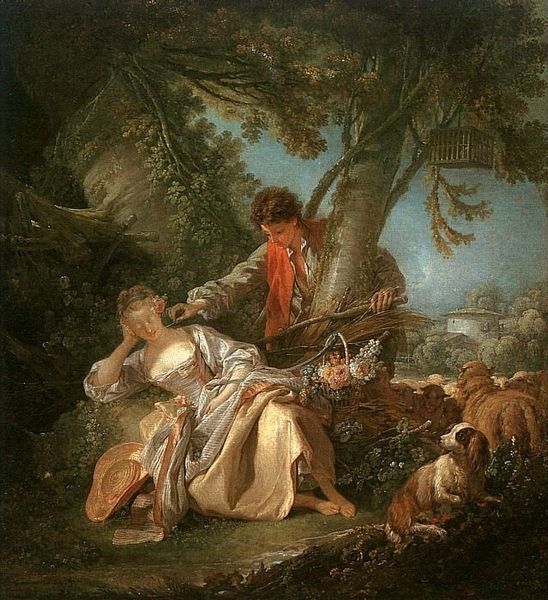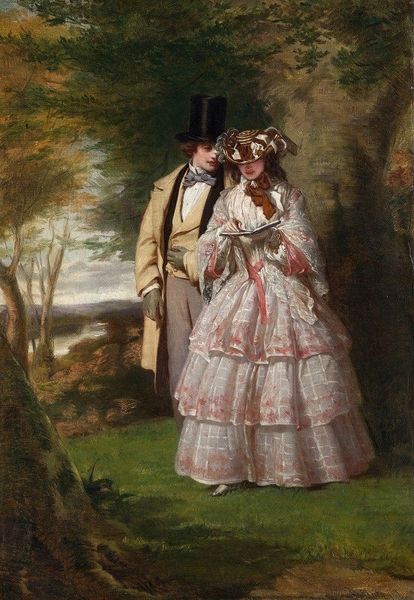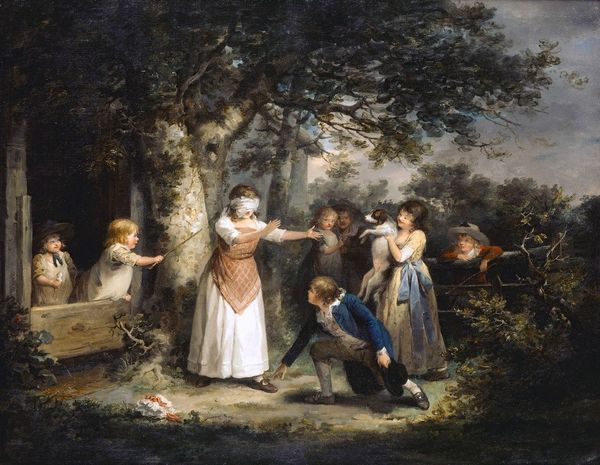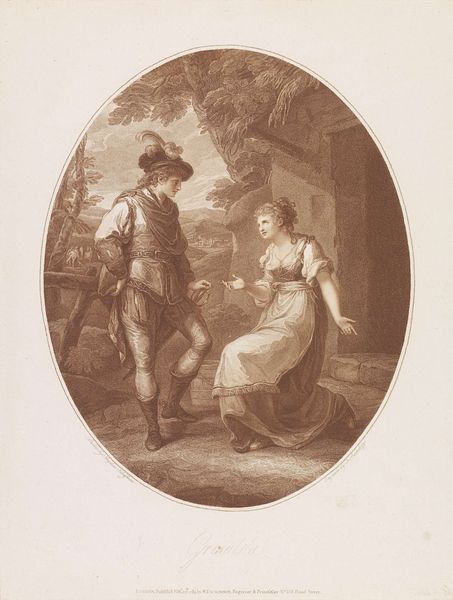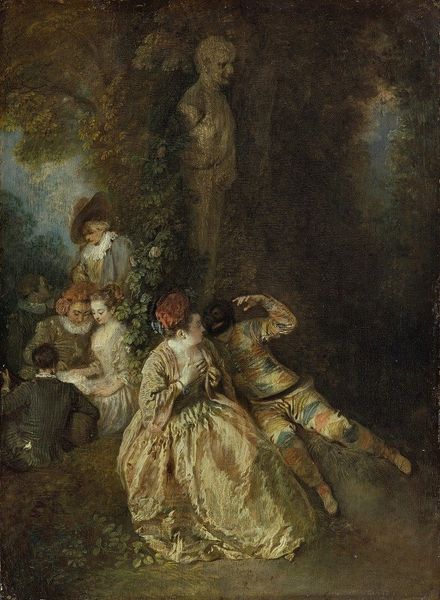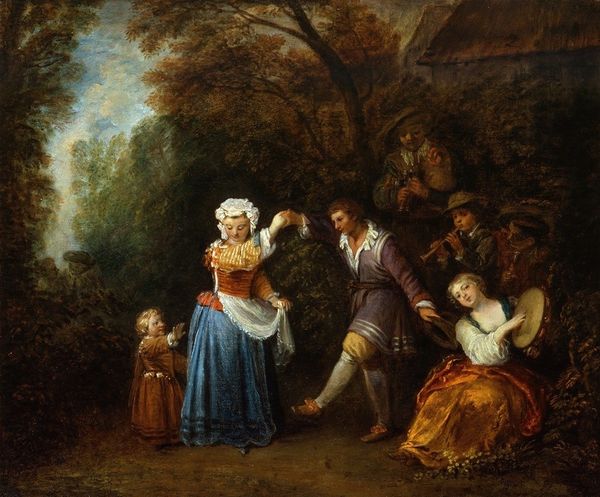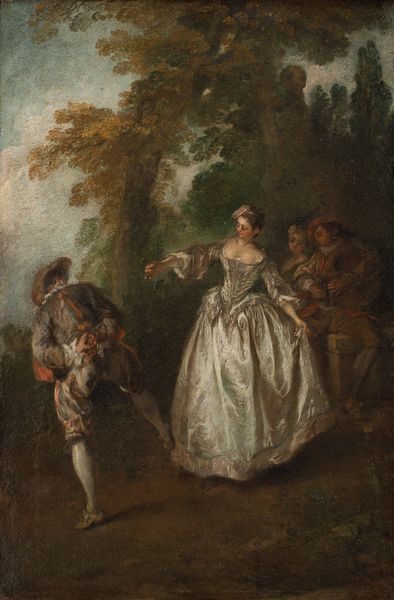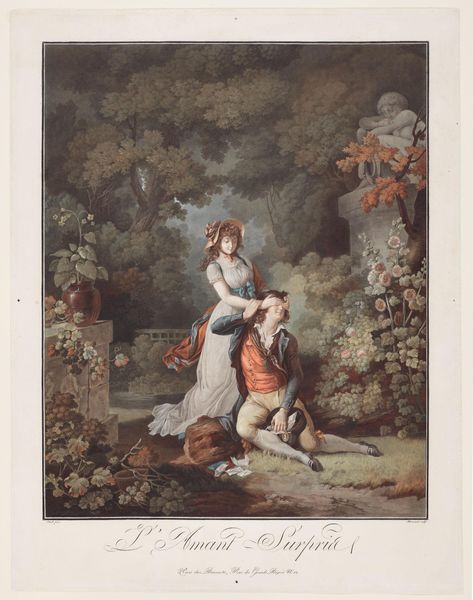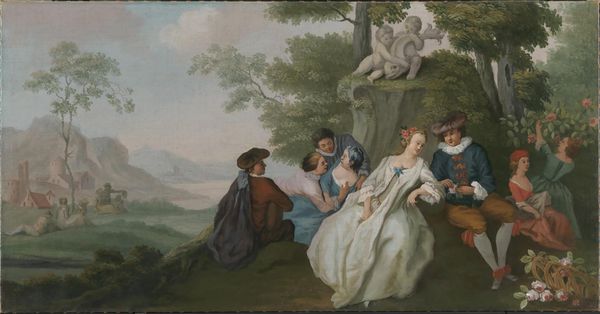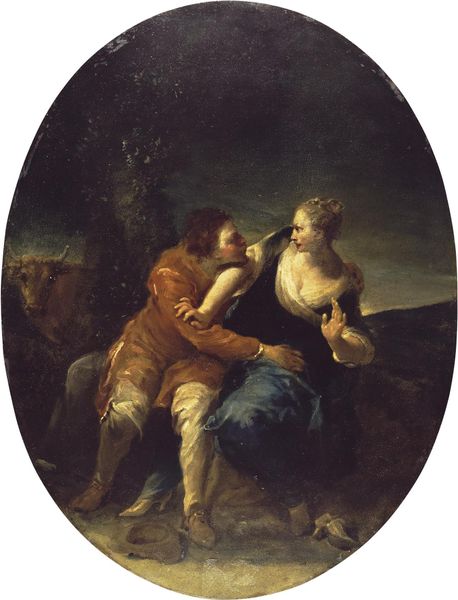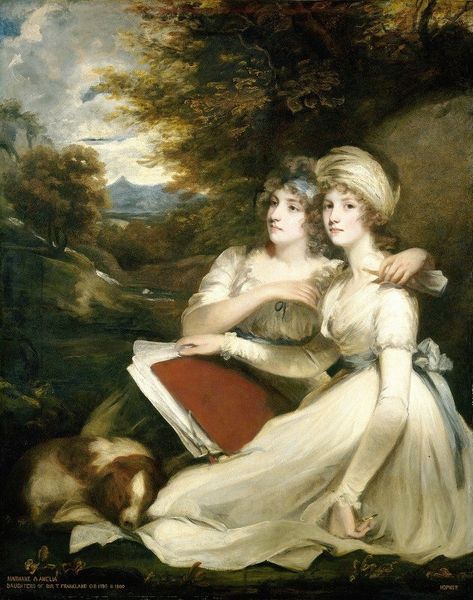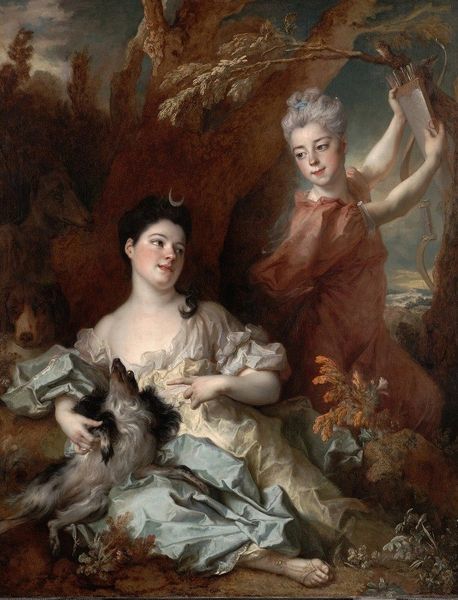
painting, oil-paint
#
portrait
#
allegories
#
painting
#
oil-paint
#
romanticism
#
genre-painting
#
history-painting
Copyright: Public domain
Curator: Here we have "Before", an oil painting attributed to William Hogarth. Editor: It immediately strikes me as… anxious. There's a definite tension, visually, stemming from the figures' gestures and the uncertain background. The palette seems lighthearted but somewhat conflicted given the circumstances depicted. Curator: Let's delve into that tension. The composition presents a familiar scene—a suitor’s pursuit—rendered through Rococo's formal elements, such as the emphasis on curvilinear forms, and yet... Editor: Yet, I'm more interested in the labour that birthed the painting. The layering of the paint. Hogarth would likely have ground his own pigments with assistants, making paint using oils such as linseed, working and reworking each layer in what conditions? Considering that question gives you real insight, beyond merely the subject itself, into what it conveys, including tension. Curator: True, the materiality tells part of the story. But look at the precise rendering of their clothes: the fall of the woman's skirt, the man's waistcoat, are signs – codified representations of class and status. Hogarth’s strategic use of light accentuates these sartorial elements, lending additional drama to their interaction. Editor: Absolutely, the attire points towards socioeconomic contexts, hinting at wealth generated by labour, perhaps even exploitation. These fabrics would've been produced and circulated through networks involving numerous hands. Also, observe the treatment of light. Hogarth wasn’t necessarily mimicking “nature," so-called, as much as managing and manipulating his raw materials into luminosity. Curator: And how the artist constructs space also contributes to its overall meaning. The woman seems cornered near that stark outcropping of rock—perhaps symbolic of the unyielding pressures she’s experiencing from both society and this man’s forceful advance. Editor: Perhaps—but what about that canvas itself? Where did that come from, how was it woven, primed, and transported? Consider the labour involved at every step. We’re looking at more than a representation of courtship—we’re looking at an object steeped in material processes and embedded histories. Curator: Indeed, engaging with the materials deepens our viewing. We come away appreciating not only the artist's hand but the confluence of social forces implicit in its making. Editor: Exactly. Understanding the material conditions and methods expands how we understand artworks; we must consider these processes of creation when assessing “Before.”
Comments
No comments
Be the first to comment and join the conversation on the ultimate creative platform.

